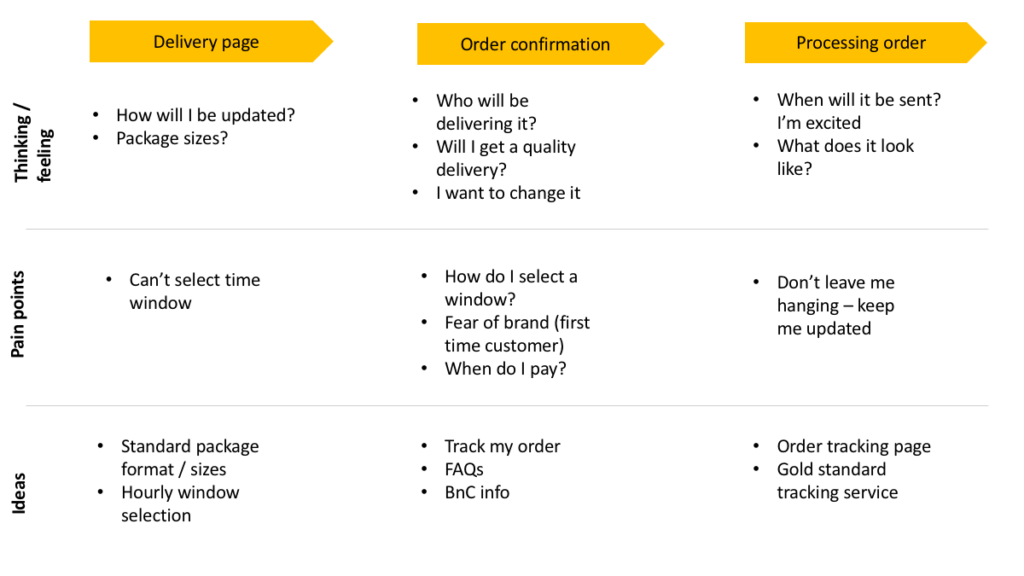An effective ecommerce content strategy is essential for businesses looking to succeed in the competitive online marketplace. With millions of e-commerce websites vying for customer attention, it is crucial to have a comprehensive plan in place to attract and engage your target audience.
An effective content strategy can help you create relevant, compelling, and valuable content that drives traffic to your website and converts visitors into customers.
In this guide, we will discuss the key components of a successful ecommerce content strategy and provide actionable tips to help you optimize your online presence.
- Understanding the Importance of an Ecommerce Content Strategy
- Defining Your Target Audience and Goals
- Producing High-quality and Engaging Content
- Utilizing SEO Tactics to Optimize Your Content
- Using Social Media for Content Promotion
- Analyzing and Evaluating the Success of Your Content Strategy
- Taking your Business to the Next Level through an Effective Ecommerce Content Strategy
- FAQs
Understanding the Importance of an Ecommerce Content Strategy

Image from Codersera
An effective ecommerce content strategy is not just an option but a necessity for businesses today. With an increasing number of consumers turning to online shopping, it is essential to have a well-defined plan to stand out from the competition.
Understanding the importance of an ecommerce content strategy is crucial for success. It allows you to attract and engage your target audience, build credibility and trust, and drive sales.
A well-executed content strategy helps you showcase your products or services, educate your customers, and address their pain points. It enables you to provide valuable information, answer frequently asked questions, and establish yourself as an authority in your industry.
Without a solid content strategy, your website may get lost in the vast sea of online businesses, hindering your growth potential.
Defining Your Target Audience and Goals
Defining your target audience and goals is crucial in crafting an effective ecommerce content strategy. Without a clear understanding of your target audience, creating content that resonates with them and meets their needs becomes challenging.
Take the time to research and analyze your target audience’s demographics, preferences, and behaviors. This will help you tailor your content to their interests and ensure it is relevant and engaging.
Additionally, having specific goals in mind will keep your content strategy focused and measurable. Your goals may include increasing website traffic, boosting conversions, or enhancing customer loyalty.
Producing High-quality and Engaging Content

Image from Department of Product
Producing high-quality and engaging content is essential for any successful ecommerce content strategy. Your content should be informative, relevant, and valuable to your target audience. By providing valuable information and solutions to their problems, you position yourself as a trusted authority in your industry.
To create high-quality content, focus on developing a consistent brand voice and adhering to your brand’s values. Your content should reflect the personality and tone of your brand, establishing a strong connection with your audience.
Additionally, ensure your content is visually appealing by utilizing relevant images, videos, and infographics.
Engaging content is key to capturing and retaining your audience’s attention. To encourage user engagement, you can use storytelling techniques, interactive elements, and call-to-action buttons.
Utilizing SEO Tactics to Optimize Your Content
Search engine optimization helps your content rank higher in search engine results pages, making it more visible to your target audience.
To optimize your content, start by conducting keyword research. Identify relevant keywords and phrases that your audience is likely to search for. Incorporate these keywords naturally into your content, including in the title, headings, and body.
In addition to keywords, optimize your meta tags, meta descriptions, and URL structure. These elements provide valuable information to search engines and can help improve your content’s visibility.
It’s also essential to optimize your website’s technical aspects. This includes improving page load speed, optimizing images, and using descriptive alt tags.
Stay updated with the latest SEO trends and algorithm changes to increase organic traffic and attract more qualified leads to your ecommerce website.
Using Social Media for Content Promotion
In addition to utilizing SEO tactics, leveraging social media for content promotion is another crucial aspect of an effective ecommerce content strategy. Social media platforms allow you to reach a wider audience and drive traffic to your website.
Start by identifying the social media platforms that are most relevant to your business and target audience. Create engaging content that aligns with your brand’s messaging and values.
This can include product promotions, blog posts, videos, and customer testimonials.
Consistency is vital when it comes to social media.
Develop a content calendar and schedule regular posts to maintain a consistent presence on these platforms. Use relevant hashtags to increase visibility and reach a larger audience.
Respond to followers promptly, encourage user-generated content, monitor social media analytics, and adjust your strategy accordingly to effectively promote your ecommerce business on social media.
Analyzing and Evaluating the Success of Your Content Strategy
Once you have implemented your ecommerce content strategy, it is essential to analyze and evaluate its success.
This step allows you to identify what works well and make necessary adjustments.
Start by tracking key performance indicators (KPIs) such as website traffic, conversion rates, and sales.
Google Analytics and other analytics tools can provide valuable insights into how users engage with your content and make purchases.
Pay attention to the types of content that resonate most with your audience.
Are blog posts driving more traffic, or do videos generate more engagement? By understanding these preferences, you can optimize your strategy and create more of the content that delivers results.
Additionally, gather feedback from your customers through surveys or social media polls.
This feedback can provide valuable insights into how customers perceive your content and whether it meets their expectations. Regularly reviewing and adjusting your content strategy based on these insights is vital to continuous improvement and success.
Taking your Business to the Next Level through an Effective Ecommerce Content Strategy
Crafting and implementing an effective ecommerce content strategy is crucial for growing your online business.
By following the steps outlined in this guide, you can create compelling and relevant content that engages your audience, drives traffic, and increases conversions.
Remember to set clear goals and objectives for your content strategy and regularly analyze and evaluate its success using KPIs and customer feedback. This data will provide valuable insights into what is working well and areas for improvement.
Stay adaptable and flexible, keeping up with evolving trends and customer preferences to maintain a robust online presence.
We make this whole process rather seamless. Contact us today so we help you create an effective ecommerce strategy for your business.
By continuously reviewing and adjusting your content strategy, you can ensure its effectiveness and ultimately achieve long-term success in ecommerce.
FAQs
- What is an ecommerce content strategy?
Ecommerce content strategy is a plan for creating and managing content to attract, engage, and convert an ecommerce store’s audience. It requires understanding the audience’s needs and aligning with the business goals. - Why is an ecommerce content strategy Important?
A well-defined content strategy helps you establish a consistent brand voice, improve search engine visibility, educate customers, and ultimately drive conversions. By aligning content with overall business objectives, you can effectively engage with their target audience and achieve their goals. - How do I identify my target audience for ecommerce content?
Conduct thorough market research to understand your audience’s demographics, preferences, and behavior. Gather data using analytics tools, customer surveys, and social media insights. Develop buyer personas to create content that resonates with specific segments of your audience. - How can I optimize product descriptions for SEO?
Optimize product descriptions by incorporating relevant keywords, providing detailed and unique product information, and ensuring a clear structure. Use high-quality images and consider user-generated content. Regularly update and refresh product descriptions to align with changing search trends. - How can I measure the success of my ecommerce content strategy?
Use key performance indicators (KPIs) such as website traffic, conversion rates, engagement metrics, and sales. Analyze customer feedback, track social media insights, and utilize analytics tools to assess the impact of your content strategy. Adjust your approach based on performance data.






0 Comments